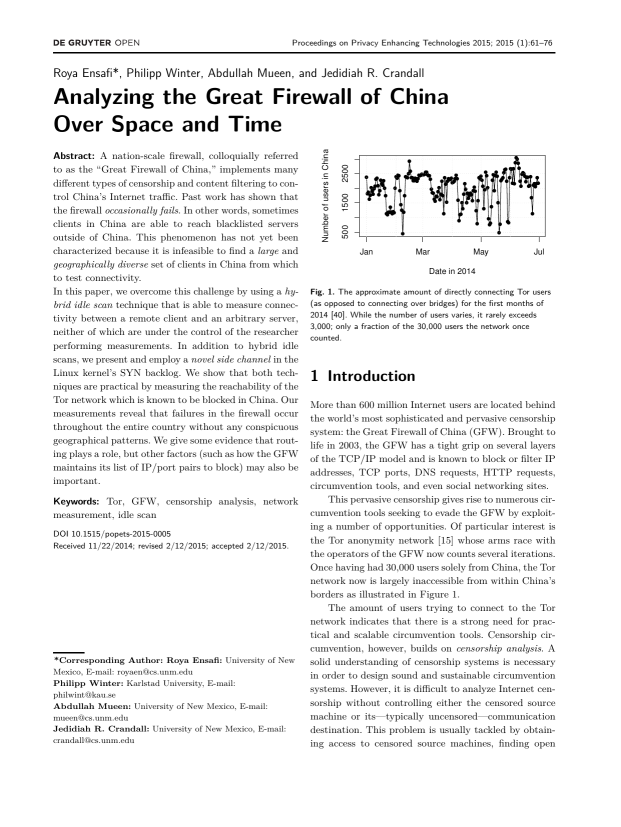Analyzing the Great Firewall of China Over Space and Time
Authors: Roya Ensafi (University of New Mexico), Philipp Winter (Karlstad University), Abdullah Mueen (University of New Mexico), Jedidiah R. Crandall (University of New Mexico)
Volume: 2015
Issue: 1
Pages: 61–76
DOI: https://doi.org/10.1515/popets-2015-0005
Abstract: A nation-scale firewall, colloquially referred to as the “Great Firewall of China,” implements many different types of censorship and content filtering to control China’s Internet traffic. Past work has shown that the firewall occasionally fails. In other words, sometimes clients in China are able to reach blacklisted servers outside of China. This phenomenon has not yet been characterized because it is infeasible to find a large and geographically diverse set of clients in China from which to test connectivity. In this paper, we overcome this challenge by using a hybrid idle scan technique that is able to measure connectivity between a remote client and an arbitrary server, neither of which are under the control of the researcher performing measurements. In addition to hybrid idle scans, we present and employ a novel side channel in the Linux kernel’s SYN backlog. We show that both techniques are practical by measuring the reachability of the Tor network which is known to be blocked in China. Our measurements reveal that failures in the firewall occur throughout the entire country without any conspicuous geographical patterns. We give some evidence that routing plays a role, but other factors (such as how the GFW maintains its list of IP/port pairs to block) may also be important.
Keywords: Tor, GFW, censorship analysis, network measurement, idle scan
Copyright in PoPETs articles are held by their authors. This article is published under a Creative Commons Attribution-NonCommercial-NoDerivs 3.0 license.

